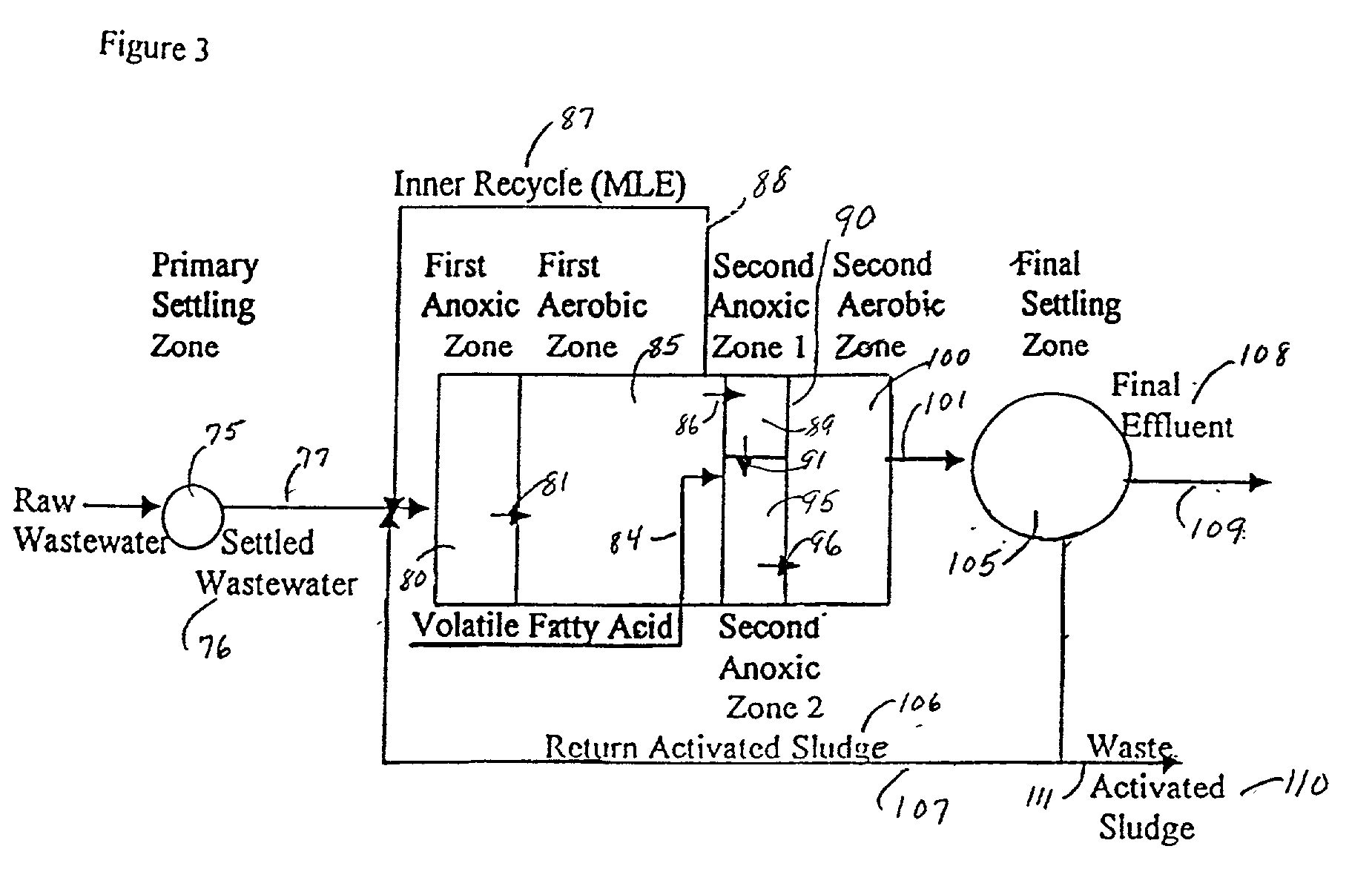Wastewater treatment process
a technology of wastewater treatment and wastewater, applied in water/sludge/sewage treatment, biological water/sewage treatment, chemical instruments and processes, etc., can solve the problems of sludge settling, nutrient removal is difficult, and additional steps are required, so as to improve the efficiency of the nutrient removal process of activated sludg
- Summary
- Abstract
- Description
- Claims
- Application Information
AI Technical Summary
Benefits of technology
Problems solved by technology
Method used
Image
Examples
Embodiment Construction
[0086] An embodiment of the process of FIG. 1 according to the invention will be termed PENReP (including activated sludge MLE-type inner recycle). The process was tested in the field with primary settled wastewater from the Rockland County, NY, (Sewer District No. 1) wastewater treatment plant in Orangeburg, N.Y., USA. The test data covered the period from Sept. 15, 1999 to Jan. 11, 2000. The operating conditions for the test period are shown in TABLE 1 and the test results are shown in TABLE 2.
1TABLE 1 Acetic acid Run No. Flow (Gpm) HRT (hours) SRT (days) (mg / l) Qr / Q 1 2.5 8 10 50 1 2 4 5 5 50 1 3 4 5 5 50 0.5
[0087]
2TABLE 2 Total InorganicAbsorbance Nitrogen, o-PO.sub.4 SS Soluble (355 nm) Process Stream mg / l as P, mg / l mg / l COD mg / l units Run 1 Settled Primary 32.64 2.98 75 113 --Effluent PENReP 1.15 0.05 5.2 20 0.049 Effluent Run 2 Settled Primary 41.98 3.21 69 96 --Effluent PENReP 1.5 0.11 2.5 18 0.041 Run 3 Settled Primary 45.11 3.3 74 130 --Effluent PENReP 1.52 0.08 3 19 0.04...
PUM
 Login to View More
Login to View More Abstract
Description
Claims
Application Information
 Login to View More
Login to View More - R&D
- Intellectual Property
- Life Sciences
- Materials
- Tech Scout
- Unparalleled Data Quality
- Higher Quality Content
- 60% Fewer Hallucinations
Browse by: Latest US Patents, China's latest patents, Technical Efficacy Thesaurus, Application Domain, Technology Topic, Popular Technical Reports.
© 2025 PatSnap. All rights reserved.Legal|Privacy policy|Modern Slavery Act Transparency Statement|Sitemap|About US| Contact US: help@patsnap.com



